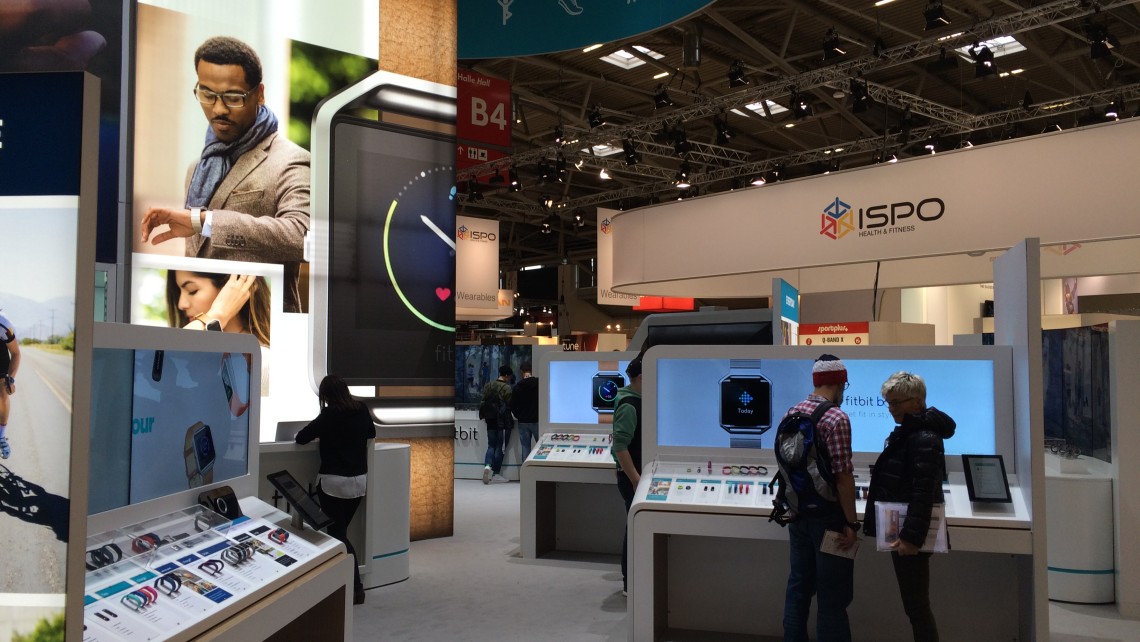We’ve just returned from a great trip to ISPO in Munich where the world’s biggest outdoor and performance brands present their latest kit to the trade. As well as meeting lots of great global brands, we were really excited to see what new stuff we’ll be seeing in the shops in 2016 and 2017. Runners particularly have seen a mini-revolution in the past few years, with watches, apps and activity trackers changing and in some cases improving the experience for many people. What are big brands and the new innovators bringing us next to inspire us to get active and dip into our pockets? We observed several trends:
- Incremental improvements from the big players – there was no genuine innovation coming from the likes of Garmin, Polar and TomTom. They’ve all caught the activity tracker wave but there’s nothing really new to get us excited this year, just some incremental improvements to improve existing products, such as the Garmin Fenix 3 adding heart rate functionality. The only ‘new’ thing Garmin could show us was a device that fits onto your sunglasses while riding which shows the same information as your cycle computer. Hardly revolutionary, very clunky and looks like something out of a bad 1990’s sci-fi film.
- Activity tracking is THE battleground – Fitbit is now punching at the same weight as those big guys. In what seems like a few short years they have grabbed a big slice of the mainstream market with well-designed, simple products that appeal to those new to running or just trying to get a bit more healthy, tapping into their underlying motivations rather than focusing on under-valued features. Others are scrambling to catch the opportunity and Fitbit will continue to have the upper hand thanks to their fresher brand, marketing nous and significant headstart.
- ‘Smart training’ is the new buzzword – several young companies were advertising their ability to use additional data points from sensors in your sole, ear or all over the body (!) to help people train more effectively. Unfortunately the market for all these products is limited to ‘serious’ athletes and the language so obscure and scientific that most are destined to remain niche at best.
- Low-tech is back too – with all the focus on the new it was heartening to see some products with no wires taking exercise back to basics. Slashpipe was one of these, but it was hard to take them too seriously!
- Gyms are so 1980s – there were loads of stands displaying the latest treadmills, weight machines and TRX equipment and although we have to come clean about our total preference for the outdoors all the gym equipment just looked dated and dull. By contrast we loved Columbia’s Tested Tough range and tagline ‘Where we choose trails over treadmills’. Here, here.
Overall while there was lots of great outdoors kit the fitness tech was a bit underwhelming. Although it wasn’t a consumer event brands still seem to be too product-centric relying on telling us about the rational benefits and functions of their product rather than creating emotional connections based on a comprehensive appreciation of their customers’ needs. While established brands continue to struggle to adapt to a customer-centric environment, they are in danger of missing the huge mass-market opportunity presented by populations increasingly focused on the health and recreational benefits of exercise. Keep it simple and give us something we need, not something you’ve made you think we want.
If you have any questions about ISPO – or any aspect of marketing communications for endurance sports – drop us a line and we’ll get straight back to you.


Leave a Comment